Osteochondrosis is a degenerative-dystrophic spinal disease, in which the lesion of intervertebral discs are noticed in the form of their deformation, reduction in height and stratification. The events of this pathology are different, but can be combined in several syndrome. Depending on the severity of symptoms, changes in the interviolent discs surrounding their structures, several stages of osteochondrose are different. Before treating the osteochondrose of the cervical region, it is important to find out why different medications, physiotherapy and surgical methods are needed.
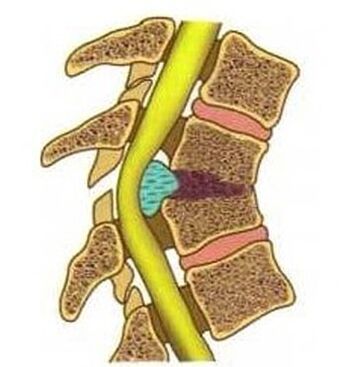
General information
The osteochondrosis of the cervical spine is most often developed in people over 35 years of age, but sometimes its manifestations are noticed at the age of 18-30 years. The spine with the cerdical vertebra consists of vertebrae, the most of them is usually affected - 5. , 6. , 7. .
There are intervertebral discs between vertebral discs, which are a special form of the most stubborn Hrskavić bones. They provide the ability of the spinal column to withstand significant loads and its mobility.
Each interverter disc consists of:
- Dentist (jacket) core, which is a mass like gel.
- Basing a thick ring surrounding the disk core.
- Two thin slabs made of white fibrous cartilage that cover discs from the above and below.
Intervertebral discs are connected to the bodies of vertebrae using ligamental devices.
Causes of osteochondrose
In people over the age of 20, ships fed intervertebral discs are overgrown. In the future, these structures receive all the necessary substances by diffusion from the array of spines, but often these processes are not enough for normal metabolism in disks.
Osteochondrosis of cervical spine is most often developed under the influence:
- Hereditary predisposition.
- Anatomical anomalies of cervical regions.
- Excess weight.
- The sedentary lifestyle associated with seating, lack of physical effort.
- Trauma spine in the neck, including bruises, fractures.
- Metabolic disorders in the body.
- Age - modified changes.
- Excessive physical effort.
- Frequent psycho -emon stress.
These factors exacerbate the offended nutrition of intervertebral disks. As a result, the pulse core is flattened, they become less elastic. The burden of fibrous rings increases, which is accompanied by stretching, the formation of cracks in them.
Against the background of such degenerative changes, the interverter disc can protect against the spinal channel. The irritation of the rear longitudinal ligament rich in nerve endings is accompanied by local pain.
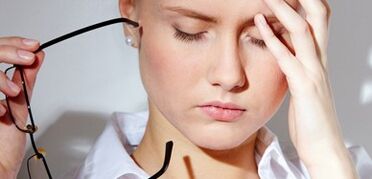
With the advancement of the disease, the rear longitudinal litter rupture appears, the interverter disc is protected in the cerebrospinal channel, this condition is called a hernia. At the same time, the cock syndrome, caused by the irritation of the nearest cerebrospinal spine, local autoimmune inflammation. If the radical-spina artery arrives, blood supply is disrupted in the spinal cord.
Osteochondrosis of cervix is monitored formation of osteophytes - production from bone tissue on bodies, vertebral processes. These formations can also squeeze roots of spinal nerves or spinal cords.
First signs
Osteochondrosis of the cervikal-thoracic department in the initial phase Follow tensions, by the rapid fatigue of the muscles of this area. After that, discomfort, neck, neck, neck, shoulders, intensification during tilt, heads around.
Dizziness, headaches - Another first signs of cervical osteochondrose in women, men. Sometimes a person is experiencing pain, a feeling of stiffness, tingling in his hands after a night sleep.
Main symptoms
Osteochondroose of cervix is most often characterized by:
- Radical syndrome;
- vertebra syndrome;
- Cardiological syndrome.
Some people have reflexive dystrophic syndromes, discogenic cervical myelopathy. Disorders in the emotional sphere, panic attacks with cervical osteochondrose often notice.
Rook syndrome
Events of radical syndrome are caused by compression (compression) roots of spinal nerves of the intervertebral disks, osteophytes of the body, the process of vertebral. As a result of nerve fiber compression, a local inflammatory reaction is developed, which is accompanied by pain through the cold nerve.
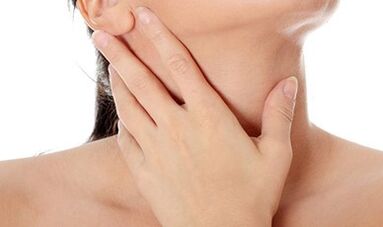
Therefore, with cervical osteochondrose, symptoms such as neck pain, hands, the areas of the rear. In the heart, the stomach can be observed by an unpleasant sensation. If the pain in the neck is constantly remaining, it is intensified when turning, tilting the head, this condition is called cervicalgia. Also, the pain can have a Lumbago character, give in hand, are called the SLOSE Services.
In those areas that innervate the affected nerve, there is a pronounced decline in sensitivity. The muscles in this area become weaker, their atrophy can be observed, which is accompanied by reducing their volume.
Vail Artery syndrome
The vertebral artery is a paired blood vessel that provides blood supply to a brain by 15-30%. When making the spine of the artery, various chronic manifestations of oxygen insufficiency in the central nervous system notice the modified intervertebral discs, the growth of vertebral disks.
In the development of this country, 2 phases differ: functional, organic (ischemic). In the first of them, the main symptoms of the verine of the artery vertebrae with cervical osteochondrosis are frequent headaches. They become more pronounced in head movements, as well as keeping one position for a long time. Pain pain or pulsates, feel in the occipital, temporal, front surface.
Dizziness for cervical osteochondrose is also characteristic of the functional phase of this syndrome. Its intensity is different: from feeling instability to a sense of sudden fall or rapid body rotation. Sometimes the hearing decreases, a person can be upset with noise in the ears. Visual disorders have been observed in the form of flies, flashing in front of the eyes.
With the advancement of pathology there is an ischemic phase. It is characterized by temporary cerebral circulation disorders in the form of transient ischemic attacks, whose appearance is often provoked by a quick slope or turning your head.
Several spine syndrome options are different, with cervical osteochondrose, whose manifestations have their characteristics:
- Drop attack.
- Barre-Lipeo syndrome (rear syndrome of cervix, cervical migraine).
- Bažina migraine.
- Syncopa vertebra syndrome.
- Ophthalmically syndrome.
- Vegetative dysfunction syndrome.
- Ophthalmically syndrome.
- Kochleo-Investbular syndrome.
- Transient ischemic attacks.
With a drunk attack, the person suddenly falls, throws his head, can't move. Consciousness losses are not observed, the ability to move independently after a few minutes. This condition is caused by insufficient blood flow to cerebellum, brain trunk.
The cervical syndrome appears due to the compression of alternating interpretations or osteophytes of nerve plexers that surround your vertebral arteries. This condition is characterized by stupid headaches, which occasionally pulsating. They usually appear if you have long maintain a forced position of your head, it often happens after sleeping on an uncomfortable pillow, when working on your computer. Such headaches for osteochondrose of the cervical region are becoming stronger during the descent, climbing the stairs, shaking during transport driving, fast walking. Pains are located on one hand in the occipital end, apply to the front parts of the head. They can exist from a few minutes to hours.
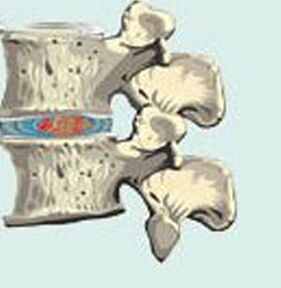
Events syndrome syndrome syncopa event due to insufficient oxygen entry to reticular brain generation. This condition is accompanied by short unconscious, with a long stay of the head, neck in forced position.
Symptoms of cervical osteochondrosis in women, men in the form of pain, feeling sand in their eyes, sparks in front of them are some of the events of ophthalmological syndrome. There is a reduction in vision sharpness, which is more pronounced with increased eye load, partial loss of visual field are possible. There is a closure, the redness of conjunctiva is noticeable.
The basic migraine attack begins by reducing the vision of both eyes, ear noise, damaged walking, speech lubrication. Dizziness is noticed with cervical osteochondrose of this exchange rate variant. Then there is a heavy headache in the occipital area, accompanied by vomiting, the attack ends with loss of consciousness.
The development of Kochleo-Investbular syndrome, when it included the pathological process of the spine of the artery in the ears, the person recorded the decline in hearings, and the perception of whispered speech is especially difficult. The feeling of instability of your body in space, the feeling of rotation of nearby facilities.
The syndrome of vegetative dysfunction reflects the disorders in the operation of the autonomous nervous system in response to the squeezing artery, nerve fibers that are around it. It is characterized by a feeling of heat, stains from cold, sweating increases. Feet, palms are becoming a cold, humid touch and sewing pain in the heart. Vegetative symptoms of cervical osteochondrosis in men, women usually follow the manifestations of other syndromes.
Trenching ischemic attacks suddenly occur attacks impaired movement coordination, heavy dizziness, speech damage, nausea and vomiting. If a person occupies a horizontal position, these manifestations usually decrease. After such an attack, headache, weakness, flies, flashes in front of the eyes, the noise in the ears is saved for a while.
Sometimes there is an increase in blood pressure with cervical osteochondrose, which is also a consequence of artery spine. As a result, the brain surface is missing, which is responsible for pressure regulation, lacking oxygen. The same nervous pulses arise in it as well as with reduced blood pressure, influenced by which increases abruptly.
Stage stages of osteochondrose
As they develop degenerative-dystrophic changes in the interfaced discs, osteochondrose in its development passes several phases.
Osteochondrosis 1. The degree of cervical region (proprietical phase)
The osteochondrosis of the cuxpholic-thoracic department at this stage is accompanied by the tension of muscles, discomfort. There is a mild smoothness of cervical cervix (physiological bending of spine in the form of bulging forward). Sometimes pain appears in this area, a temporary decline in sensitivity in the collar zone is possible.
Osteochondrosis 2 degrees
There is a sense of weakness in your hands, the skin stiffness, neck, also reduces sensitivity in the upper limbs. The vision worsens, the noise in the ears was observed.
Osteochondrosis 3 degrees
At this stage there is an interverter disc rupture with or without its formation. The neck pain, the collar zone becomes more pronounced, permanent, is given in their hands.
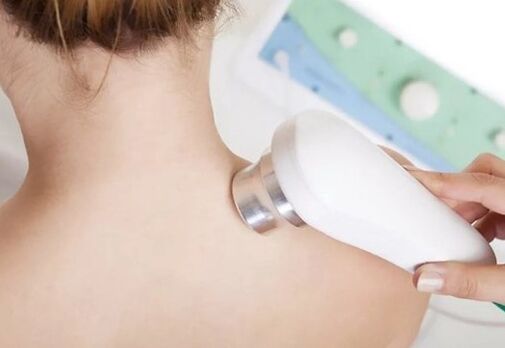
Osteochondrosis 4 degrees
With osteochondrose of cervix, not only intervelebral disks, vertebrae, but also nerve fibers, are involved in the pathological process, sometimes spinal cord, muscles, joints of the upper half of the body. Symptoms of the disease are diverse, they look like the signs of other pathological conditions. If osteochondrose manifestations occur, you must immediately contact a doctor to pass the passage.
First aid for strong pain
Treatment of osteochondrose of the cervical spine in the event of strong pain should first be focused on stopping. Medications with pain medications are used for this. They were taken from the inside, in order to achieve a faster effect with cervical osteochondrose, the injections of these drugs are recommended.
Sometimes a paprika patch is used, this tool irrimates skin receptors, improves blood circulation in the use zone. As a result of such distracting actions, experienced pain seem less pronounced.
Physiotherapy
Treatment of cervical osteochondrosis in women, men with physiotherapy are focused on:
- Elimination of pain;
- Inflammation reduction;
- relaxation of spasmodic muscles;
- Improving metabolic processes, blood supply in the affected area;
- The edition of the roots of spinal nerves knocked osteophytes (growth of bones on the vertebrae).
The massage begins with a blow of a collar zone in the direction of the spine to supragocular, axillar to the area. Then the kindergartens of the grip, for this masseur puts a hand on the edge perpendicular to the spine, moves it from top to bottom. In the future, in order to warm up the muscles, they improve local blood flow, rubbing is used. Fingers are performed straight, circular movements, starting with the base of the skull. Then mix the muscles in circular movement in the area of collar environments. Vibration movements in the form of earthquakes in the form of need, as well as caressing, are used to complete the massage.



















